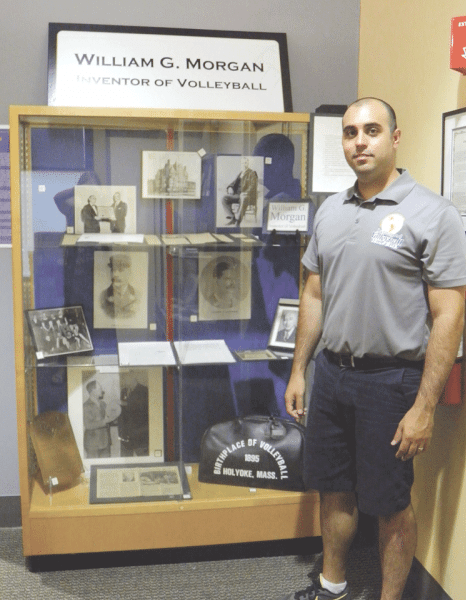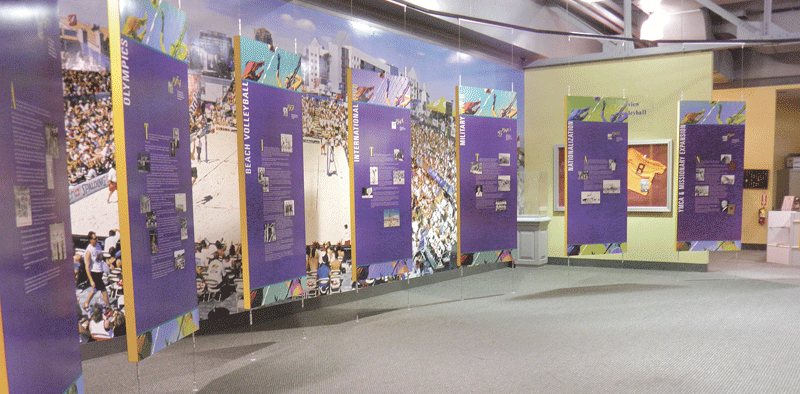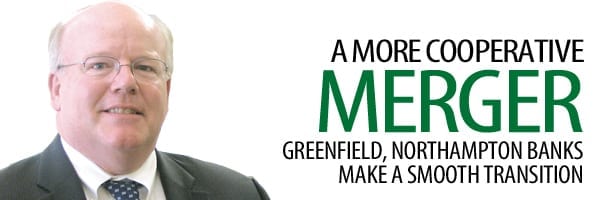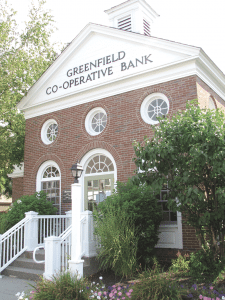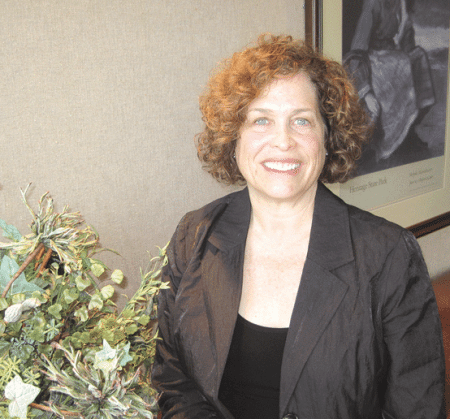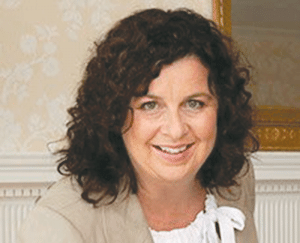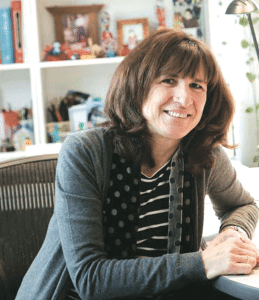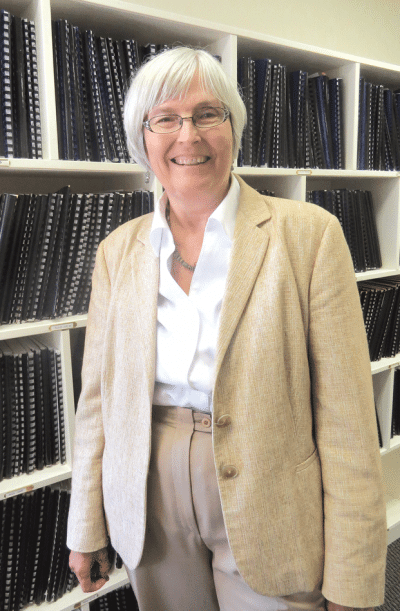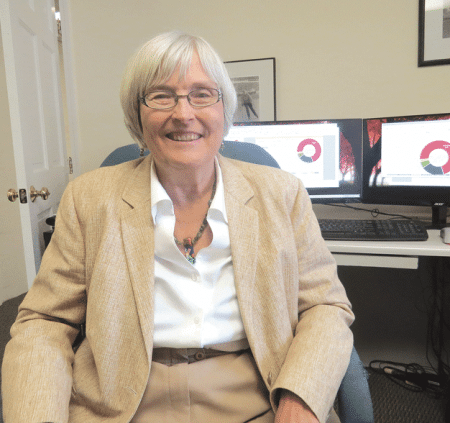Not A Primary Concern
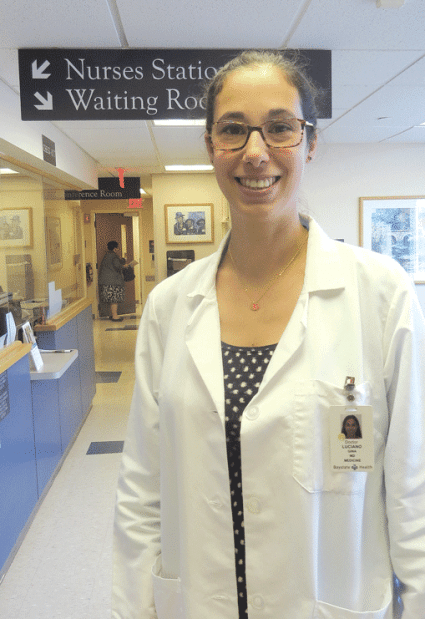
Dr. Gina Luciano says there are many reasons why medical-school students are shying away from primary care, but she finds the specialty rewarding on many levels.
The problems causing a nationwide shortage of primary-care doctors — ranging from pay to prestige — are well-documented. Perhaps lesser-known are the reasons why medical students do choose this challenging, multi-faceted niche of medicine. Several young, local doctors have plenty to say about why they took the primary-care path at a time when a growing, aging population needs them most.
When asked about why students in medical school are shying away from careers in primary care, Dr. Gina Luciano was ready with an answer that would indicate she’s addressed that question more than a few times.
And she has.
That’s because, as co-director of the Primary Care Residency Track at Baystate Medical Center, the Springfield area’s only teaching hospital, she has chosen that field, she instructs those who have done the same, and, well, she promotes it as not merely a highly rewarding specialty, but one that is obviously critical within the broad healthcare system.
As for that answer … it comes it two parts basically, the first having to do with finances, and the second focusing on what she called the “culture of medicine.’ And they both help explain what most consider to be a problem and others are calling a crisis when it comes to attracting people to primary care.
“When most students graduate from medical school, they are hundreds of thousands of dollars in debt — I’ve had friends who are close to half a million dollars in debt by the time they graduate,” she noted while addressing the former. “And when you look at how people are paid, primary care physicians are near the bottom when you compare it to other specialties. So if you’re hundreds of thousands of dollars in debt, you may not want to go into primary care from a financial perspective.”
As for the latter, “many students and many residents, especially those who are excellent students, will be pushed to go into the most competitive fields,” she told BusinessWest, putting cardiology, gastroenterology, and other specialties in that category. “People will actually say to a year-two resident things like ‘why would you want to go into primary care? You’re so smart, you could go into ‘x’ or ‘y.’ I think there’s some sway from mentors and advisors in some institutions to go into something, quote, more competitive, unquote.”
As things turned out — although the decision certainly didn’t come easily, and, in fact, not until after she completed her residency at Baystate, one that included considerable work at the system’s High Street Health Clinic in Springfield, among other facilities — none of the above really mattered, or mattered enough to dissuade her from following what her heart told her she should do.
“The reason I chose primary care was because I realized that what I valued in my work was a continuous healing relationship with patients,” she explained. “I had developed these very important relationships with patients I had at High Street, and for me what’s most joyful about medicine is seeing people progress over time, and really understanding them — not just their health problems, but their whole person.”
Using that word relationship and the term whole person, or words to that effect, both early and often, other young doctors currently in or recently graduated from Baystate’s Primary Care Track, talked about why they chose the same career path as Luciano.
Dr. Kathryn Jobbins was actually roughly half-way through a residency in general surgery at the Cleveland Clinic, when she decided to not only switch gears career-wise, but return to the area where she grew up and the hospital where she worked years earlier.
“I thought I wanted that fast pace, but I missed talking to patients — and I missed my parents,” she said of her decision to begin another residency, this one in primary care, at Baystate. Fast forward more than three years, and she is now the internal medicine chief resident at Baystate and thus an instructor. Which means that, like Luciano, she splits her time between teaching and taking care of a number of patients at High Street, and, also like Luciano, greatly enjoys both aspects of her job description.
Among those she works with is Dr. Nicolas Cal, a second-year resident in the Primary Care Track who started down a path to be a neurosurgeon, but after some deep soul searching, changed course toward internal medicine, and specifically primary care.
“I decided to be 100% honest with myself … I didn’t think that neurosurgery was going to make me a very happy person 20 or 30 years from now, so I decided to change to primary care,” he said, adding that he has no regrets about that decision.

Dr. Kathryn Jobbins says working in primary care offers a unique opportunity to work with patients over the course of many years, even decades.
Nor does Dr. Amulya Amirneni have any about hers. The native of India who immigrated here when she was 9 and later returned to her homeland for medical school, said she enjoys the very personal nature of primary care medicine, and said it amounts to “treating someone as an individual, as a person, and not as a disease.”
For this issue, BusinessWest talked with these young doctors about their decision to pursue a career in primary care, and about how and why they won’t be part of any problem or crisis in this field.
Course of Action
As she talked at length with BusinessWest, it became clear that Luciano has become as versed in talking about why she chose primary care as she is in explaining why increasing numbers of young people choosing to become doctors are not.
The relationship factor has a lot to do with it, she explained, noting again, that people in this field get to see the same patients over a span of years, if not decades, rather than perhaps a few days or even hours for those in other specialties. And thus they get to know those patients, and, as she said, the whole person.
“You get to see how their socio-economic background fits into their health, and how their family fits into their health, and how their culture fits into their health,” she explained, adding that the High Street facility, and Baystate Health in general, treat a wide demographic group and many challenged populations.
But there are several other aspects to this field that appeal to her, especially the variety of the work.
“The other reason I really like primary care is that it’s extremely broad,” she went on. “The pathology I see is really quite phenomenal; I see a variety of medical conditions at any given time.
“We have patients who have lived in the United States their whole lives, we have patients who have recently immigrated … this specialty really gives you the whole gamut of medicine,” she continued. “I enjoy that broad flavor.”
She also greatly enjoys teaching, and that’s why roughly half her time is spent seeing a portfolio, or panel, of perhaps 200 patients at the High Street facility, and the other half is spent helping young doctors navigate the three-year primary care residency track, which is part of the larger internal medicine residency.
There is room for 12 students in the program, or four a year, and there are currently seven enrolled in it, a number that speaks to the popularity of primary care, or lack thereof, said Luciano, adding that those who enter it understand those issues she detailed earlier, especially those involving finances and student loans.
But the doctors we spoke with said their choice has to do with passion, not money or prestige.
“I didn’t become a doctor for money … I became a doctor because I’m a bit of a science nerd and I like helping people,” said Jobbins, who probably spoke for everyone with those comments.
And that passion is a necessary ingredient in overcoming still another potential deterrent to those considering possible career paths within health care. Indeed, Luciano said those who enter a primary care track like Baystate’s often wind up working in residency clinics like High Street, which serve what she described as challenging populations for young doctors.
“Residency clinics have historically been places that have limited resources, the patients are disadvantaged, there’s a lot of pathology — there’s just not a lot of support for those patients,” she explained. “It’s generally Medicaid and Medicare patients, and taking care of those patients can be very tricky and challenging. So I think it’s very difficult for a resident who’s just starting out to navigate that system, but also to see how patients get better over time.
“It takes a longer time to see how you’ve had an impact,” she went on. “It’s much easier to be in the hospital and have someone come in to the hospital; you treat them, they get better, they leave — it’s much easier to see the impact that you’ve had on that patient. You don’t necessarily get to see that if you’re in a residency clinic.”

Dr. Nicolas Cal transitioned into primary care after deciding that neurosurgery was not going to lead to the rewarding career he desired.
Jobbins agreed, but said she’s been motivated and energized by those challenges, and finds working in the High Street facility quite rewarding, and also intriguing.
Indeed, she said she’s very limited when it comes to Spanish, and doesn’t really know any of the other languages she encounters there, including Vietnamese, Chinese, and Nepalese, but has become quite adept at working with an interpreter in the room.
“I love the interpreters, and they do a great job,” she explained. “They do it almost live action — they’re talking while I’m talking. Some of my best relationships are with Hispanic patients, and we establish that through an interpreter.”
Overall, she’s looking forward to the prospect of treating the same patients for maybe 20 or 30 years, caring for them and being with them as different chapters in their lives unfold. And she said she’s already had a taste of how rewarding that can be.
“It’s wonderful, really,” she explained. “And it’s something you don’t really expect until someone stands up and hugs you or says ‘I just got my green card,’ or ‘my daughter is getting married.’ You see this very intimate snapshot into their life, which is very rewarding and a big part of why I decided to stay in primary care.”
Motivating Factors
And it is the unique nature of the primary care track, one that exposes residents to sub-specialists in their offices and teaches them not only about a wide range of medical conditions, but also teamwork and how and when to refer, that prompted her to pursue a teaching component through chief residency.
In that role, which she chose rather than moving directly into private practice, she serves as junior faculty and attending physician — essentially teaching while still learning.
“I fell in love with the program from an academic standpoint, and that’s why I decided to stay on as chief resident,” she said. “The goal is to do academic medicine with a focus on primary care when I’m done.”
For Cal, a native of Uruguay and graduate of New England Medical School in Maine, the immediate goal is to complete his residency and continue serving patients at the High Street facility.
While doing so, he envisions a career in primary care, hopefully in the Northeast. Like Luciano and Jobbins, he said he enjoys interacting with patients, seeing them over a long period of time, and helping them achieve progress with whatever health issues they may have.
“I love seeing my patients over and over and over again,” he explained. “I like dealing with different disease processes and knowing that I will have the time to follow up on my patient and adjust the treatment options to make the patient healthier.
“For example, yesterday, I had a patient at the clinic, a 34-year-old male, and I had to tell him he had colon cancer,” Cal went on. “As his primary physician and having to set up all the various specialists and appointments that he will have to go through — to me that’s very fulfilling.”
Delivering such news is one of many aspects of the job of a primary care physician, especially one in a setting like High Street, he went on, adding that another is being both “stern and compassionate,” as he helps patients within that constituency to understand various health problems and issues and compel them to take ownership of their own health.
“That’s a fine balance, and sometimes it can be frustrating for the physician knowing the patient may not be listening or fully grasping what will happen if he doesn’t change his habits,” he explained. “Our job is to motivate, and I like that part of the work.”
Amirneni hasn’t had many opportunities to motivate yet, having just started her residency a few months ago, but she said she’s looking forward to the opportunity.
“I definitely enjoy talking to patients and seeing them progress over time,” she said. “I know I’m more or less going against the trend when it comes to primary care, but the prospect of working that closely with patients and making a difference in their lives is what motivates me to stay in this field.”
“I’m really just getting started, so I’m hoping that I maintain that enthusiasm moving forward,” she went on, adding that, like Cal, she sees herself working in an outpatient setting when she completes her residency. “I really don’t think that will be a problem.”

Dr. Amulya Amirneni says primary care allows physicians to see their patients progress over time, something not afforded by other specialties.
Having enthusiasm and a desire to work closely with a patient are only a small part of the equation when it comes to the elements that make for a successful primary care physician, said Luciano, adding that these are simply pre-requisites.
“When I interview, I look for people who are compassionate, who are good team players, who want to make a difference in the world, who value relationships, and who want to see a continuous healing relationship with their patients,” she noted, adding that, like the passion that drives one to this specialty, many of those things can’t be taught.
“You can help people develop those skills, but for the most part, you either have them or you don’t,” she went on, adding that this is perhaps another reason why such individuals are in short supply.
Bottom Line
As she talked about her work and why she enjoys it so much, Jobbins said she’ll often challenge young residents thinking about sub-specializing to consider a different career track — hers.
“I’ll say, ‘why wouldn’t you do primary care? This kind of work is great,’” she told BusinessWest, adding that she gets a wide variety of responses to that query, most of them reflecting those two major points of concern that Luciano mentioned.
Whether more people will heed her advice in the years to come instead of following the money or the prestige remains to be seen. For now, there is a problem attracting people to this specialty, and, depending on one’s viewpoint, a crisis.
A solution will be hard to come by, but some young doctors are only interested in being part of one. They say they like forging relationships and treating the whole person.
So they have no primary concerns about their chosen field, literally or figuratively.
George O’Brien can be reached at [email protected]







